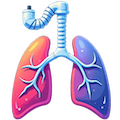LITERATURE
Targeted Temperature Management
GOAL CEREBRAL PERFORMANCE CATEGORY 1 or 2
Protocol
- TARGET of NORMOTHERMIA (<37.5)
- Fever will injure the brain further
- Avoid sedation, if using, utilize short-acting agents
- Consider continuous EEG
- Valproic Acid and Levetiracetam are reasonable first-line agents for treatment of seizures
- Do not aggressively treat clinical myoclonus without electrographic correlate unless myoclonic activity interferes with other aspects of care (such as ventilator synchrony)
- Consider MAP >80mmHg to ensure CPP >60mmHg
- If available can consider ICP monitoring to tailor goals
Prognosis in Cardiac Arrest
- Must delay neuro assessment for neurologic prognosis ~ 72 hours after return to normothermia
- Clinical signs that carry poor prognosis (if the first three are absent at 72h post-normothermia, 100% predictive of poor outcome)
- Lack of pupillary response
- Lack of corneal reflex
- Absence of motor response except extensor Myoclonic status epilepticus
- SSEPs measurement (somatosensory evoked potentials) response is most accurate predictor of poor outcome in anoxic brain injury
- Electrical stimulus of the median nerve (at the wrist). Nerve action travels up sensory and motor fibers with arcs through the spinal cord and into the brainstem and finally the thalamus (N18). After traversing the internal capsule the N20 peak is recorded over the somatosensory cortex contralateral to the wrist stimulated.
- Absence of this by 72 hours has a PPV of 100% for poor outcome
- Labs- neuron specific enolase > 33 ug/L
